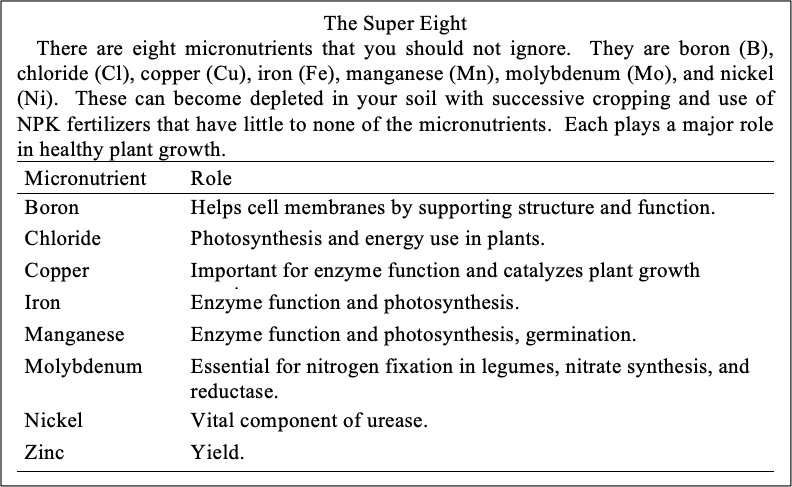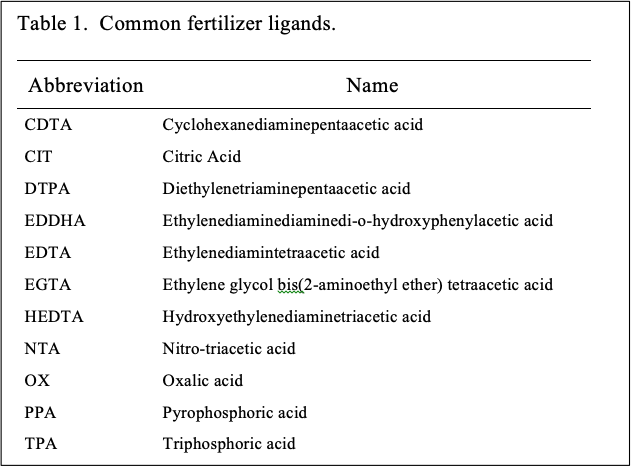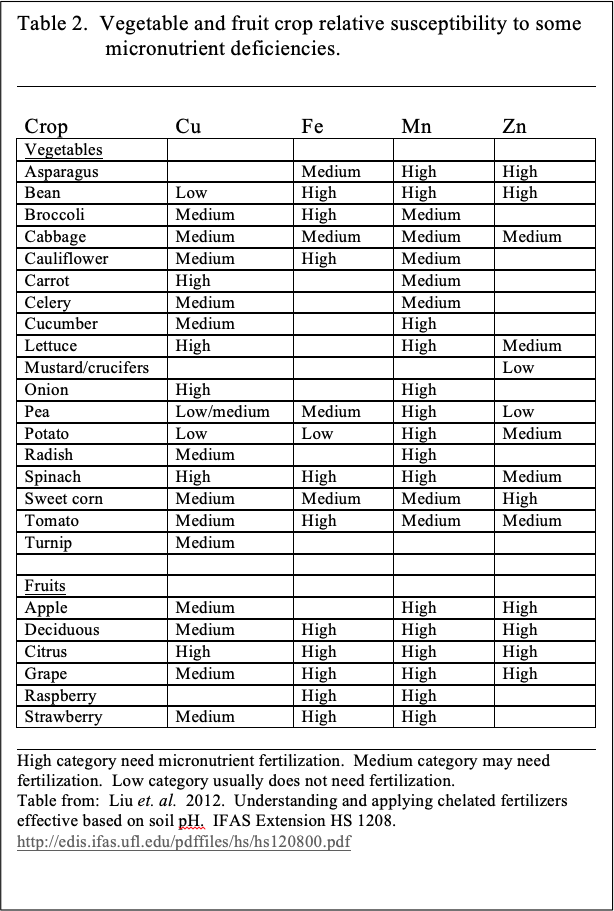
By Dr. Wes Chun Ph.D.
Grower's Secret, Chief Science Officer Emeritus
April 4, 2019
Introduction
Supplying micronutrients to plants can be problematic. Many N, P, or K agricultural fertilizers lack sufficient quantities of essential micronutrients to meet plant needs. Micronutrients are often applied pre-plant but additional in season applications may be needed to address plant micronutrient deficiencies that may occur due to high or low soil pH, plant or environmental issues. Synthetic micronutrient fertilizers in the ionic form are available to plants within a limited pH range (pH 6.5 to 7.5). High soil pH (pH>7.5) decreases the availability of copper (Cu), iron (Fe), manganese (Mn), and zinc (Zn). When the soil pH is low, the macronutrients calcium (Ca), magnesium (Mg), and molybdenum (Mo) may be limited. Thus, soil applications of synthetic micronutrients are particularly challenging and can be more problematic especially in sandy soils or when growing crops that have high micronutrient demands. Synthetic and organic chelated micronutrients were developed that are less reactive to soil conditions. These fertilizers can significantly enhance nutrient uptake and improve efficiency of utilization. Application rates of most chelated micronutrients are 0.2 to 1 pound per acre for vegetables, and 0.1 to 0.5 pound per acre for fruits. Foliar application is often more effective.

What are Chelated Micronutrients?
Chelated micronutrients are fertilizers where the micronutrient ion (for example Fe or iron) is surrounded by a larger molecule called a ligand or chelator. Ligands can be natural or synthetic chemicals. These compounds combined with a micronutrient forms a chelated micronutrient. Chelated micronutrients are protected from oxidation, precipitation, and immobilization in certain conditions. A few examples of ligands are in Table 1. These chelates have different effective pH ranges. The effective pH range for Fe-EDTA is 4 to 6.5, Fe-DTPA is 4 to 7.5, and Fe-EDDHA is 4 to 9. Fe-EDDTA is effective when pH is greater than 7 but it is costlier. There are also many naturally occurring chelating agents such as amino acids, organic acids, humic and fluvic acids, ligninosulfonates, ligninipolycarboxylates, sugar acids, phenols, polyphosphates, flavonoids, and siderophores. These are generally less expensive, functional over a wider pH range, and less toxic to plants. Both synthetic and non-synthetic chelates are OMRI permitted.

Are Chelated Micronutrients Needed?
Soil is heterogenous and complex and applied traditional micronutrients may become unavailable to the plant because of oxidation or precipitation. Use of chelated micronutrients improves the bioavailability of micronutrients and can contribute to crop quality and yield. Chelated micronutrients should be considered if plants display micronutrient stress, in alkaline soils that limit micronutrient availability, or when soil micronutrient supplementation is insufficient.
Where am I Least Likely to Need Chelated Micronutrients?
Soil that has igneous parent material or other rocks high in nutrients can supply the necessary micronutrients. Some igneous rocks are high in zinc. Clay soils with high Cation Exchange Capacity (CEC) or micronutrients in the mineral structure may not need additional micronutrients. High CEC soils can “capture” micronutrients and maintain them in ionic form for the plants. Micronutrients in the mineral structure are released over time. Soils with high organic matter also tends to maintain micronutrients in bioavailable form.
Where am I Most Likely to Need Chelated Micronutrients?
US and Canadian soils may be deficient in boron (B). Boron is not influenced by organic matter, leaches easily, and can be locked up by fresh lime. Boron is higher in alluvial than igneous soils. It is low in subsoils and dry weather may create boron deficiency symptoms when plant roots go deeper in search of water.
The type of soil can affect micronutrient availability. Leached sandy soils have low CEC are low in B, Cu, Mn, Mo, and Zn. Quartz is low in Zn. Alluvial soils, weathered acid soils that are subject to leaching, and low organic matter soils all tend to be deficient in micronutrients. High pH soils are low in Fe, Mn, Zn. Acidic soil may be deficient in Mo.
Does my Crop Need Chelated Micronutrients?
The answer is an obvious yes if you are seeing micronutrient deficiency symptoms in your crop. The good news is that foliar application of a micronutrient can usually remediate the problem in a few days. You should consider additional micronutrients if you are growing a particularly susceptible crop such as citrus which is susceptible to low levels of Cu, Fe, Mn, and Zn and especially if the soil is alkaline. (See Table 2 for a list of vegetables and fruits, and their susceptibilities to micronutrient deficiencies).
It is important to address micronutrient deficiencies especially in crops that are highly susceptible. In these instances, significant improvement can be obtained in crop quality and yields. In situations where no micronutrient deficiency exists, application of additional micronutrients may have some value. For example, total yield in pear was higher (but not statistically significant) with amino acid chelated Fe compared to controls and ranged from 7 to 64% increase between years of the study. Shoot length increased and there were no changes in fruit firmness. In other crops, Fe and Zn content in leaves were higher when Fe and Zn chelates were used. Since amino acid chelated micronutrients are relatively new to the market, additional research is needed to determine if there are consistent benefits for additional micronutrient supplementation.

Take-Home Message
Note: Check with your local recommendations and regulations as some states require documentation of a micronutrient deficiency before use of these types of products.